Stuffed grape leaves, known as ‘ورق عنب’ (waraq ‘inab) in Arabic, are a cherished dish in Palestinian cuisine, often enjoyed during family gatherings and festive occasions. The delicate grape leaves encase a savory filling of rice, herbs, and sometimes meat, creating a delightful blend of flavors and textures. Each bite offers a burst of freshness from the herbs and a hint of tanginess from the lemon broth, making it a dish that tantalizes the taste buds and warms the heart. The process of rolling the leaves is not just cooking; it’s a labor of love often shared among family members, evoking nostalgia and a sense of togetherness that is fundamental to Palestinian culture.
The origins of stuffed grape leaves can be traced back to ancient Mediterranean cultures, where grapevines flourished and their leaves were used in various culinary applications. In Palestine, this dish has evolved over generations, integrating local ingredients and flavors. Traditionally, it was a way to utilize the bounty of the land, with families growing their own grapevines and harvesting them during the summer months. While variations exist across the region, the essence of this dish remains the same—an expression of hospitality and community, served at weddings, holidays, and family gatherings.
What sets stuffed grape leaves apart is their versatility and the combination of flavors they offer. The use of fresh herbs like parsley and mint adds a refreshing note, while the spices enhance the depth of flavor. The option to include ground meat introduces a heartiness that appeals to many palates. Moreover, the technique of slow-cooking them in a lemony broth allows the grape leaves to absorb the flavors, making each bite a delightful experience. This dish not only represents Palestinian culinary traditions but also showcases the agricultural richness of the region.
The Must-Do’s
To ensure the authenticity of stuffed grape leaves, it’s essential to use tender grape leaves, either fresh or properly prepared if jarred. The filling must be well-seasoned, balancing the herbs and spices to create a harmonious flavor profile. When rolling the leaves, take care to avoid overfilling, as this can lead to bursting during cooking. Finally, the simmering process is crucial; it allows the rice to cook evenly and the flavors to meld beautifully. Always keep the rolled leaves submerged in the broth to prevent them from drying out.
Delight in these aromatic grape leaves filled with a delicious mixture of rice, herbs, and spices, simmered in a zesty lemon broth. Leftover stuffed grape leaves can be stored in an airtight container in the refrigerator for up to 4 days. They also freeze well for up to 3 months.
If using fresh grape leaves, blanch them in boiling water for 2-3 minutes until tender. If using jarred leaves, rinse them thoroughly to remove excess brine.
In a large bowl, mix together the rice, chopped onion, parsley, mint, allspice, salt, black pepper, and olive oil. If using ground meat, add it to the mixture as well. Stir until well combined.
Lay a grape leaf on a flat surface, vein side up. Place a tablespoon of filling near the stem end. Fold the sides over the filling and roll tightly from the stem end to the tip. Repeat with remaining leaves and filling.
In a large pot, arrange the rolled grape leaves tightly in layers. In a separate bowl, combine water or broth, lemon juice, olive oil, and salt. Pour the mixture over the grape leaves, ensuring they are submerged. Place a heavy plate on top to keep them in place.
Cover the pot and bring to a boil. Reduce heat to low and simmer for about 1.5 hours, or until the rice is fully cooked and the grape leaves are tender.
Remove from heat and let sit for 10 minutes. Serve warm, drizzled with additional lemon juice and garnished with fresh herbs.
Ingredients
Pro Tips
For an enhanced flavor profile, consider adding a pinch of cinnamon or nutmeg to the filling. If you prefer a vegetarian version, simply omit the meat and increase the quantity of rice and herbs. Common mistakes to avoid include not rinsing jarred grape leaves to remove excess salt and overcooking them, which can lead to mushy texture. To improve the texture, soak the rice for 30 minutes before mixing it into the filling, allowing it to absorb some moisture and cook more evenly.
Serving Suggestions
Stuffed grape leaves are best served warm, alongside a dollop of yogurt or a drizzle of tahini sauce. Pair them with a fresh salad made of tomatoes, cucumbers, and a tangy dressing to balance the richness of the dish. For a refreshing beverage, consider serving mint tea or a light lemonade.
Garnishing & Presentation
Enhance the presentation of stuffed grape leaves by garnishing with fresh lemon wedges and sprigs of parsley or mint. Arrange them neatly on a large platter, allowing the vibrant colors to shine. Drizzling a bit of olive oil over the top just before serving adds a touch of elegance and enhances the flavors.
الطعام هو الحب الذي نشاركه مع الآخرين
Translation: ‘Food is the love we share with others.’ This saying encapsulates the spirit of hospitality inherent in Palestinian culture, where sharing meals brings people together and strengthens bonds.
Growing up, my family would gather around the kitchen table to prepare stuffed grape leaves, turning the act of cooking into a cherished memory. The laughter, stories, and the aroma of fresh herbs wafting through the air created a warmth that lingered long after the meal was over. Each roll of the grape leaf was a lesson in tradition, a reminder of the love and care that goes into every dish. As I share this recipe, I invite you to create your own memories and savor the flavors of Palestinian hospitality.
Equipment Needed
- Large pot
- Mixing bowl
- Cutting board
- Sharp knife
- Measuring cups and spoons
- Heavy plate
Cooking Techniques
Blanching
Briefly boiling grape leaves to soften them for easy rolling.
Simmering
Cooking the stuffed leaves slowly to allow flavors to meld and the rice to cook thoroughly.
Serving Suggestions
- Serve with a side of yogurt or tahini sauce.
- Pair with a fresh salad or pita bread.
Garnish Suggestions
- Garnish with lemon wedges and fresh parsley or mint.

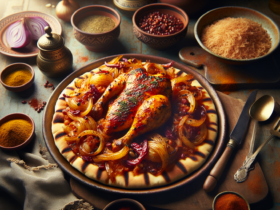

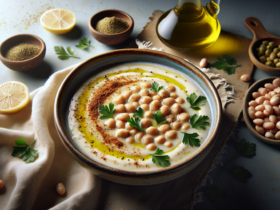
![[object Object]](https://haboba.com/wp-content/uploads/2025/03/Refreshing-Parsley-and-Bulgur-Salad-with-Lemon-Dressing-280x210.png)
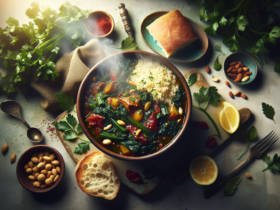
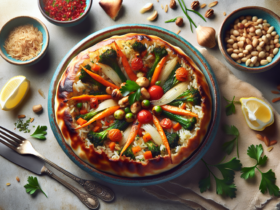
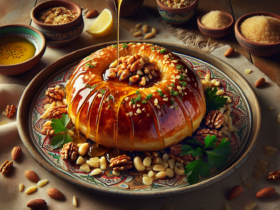
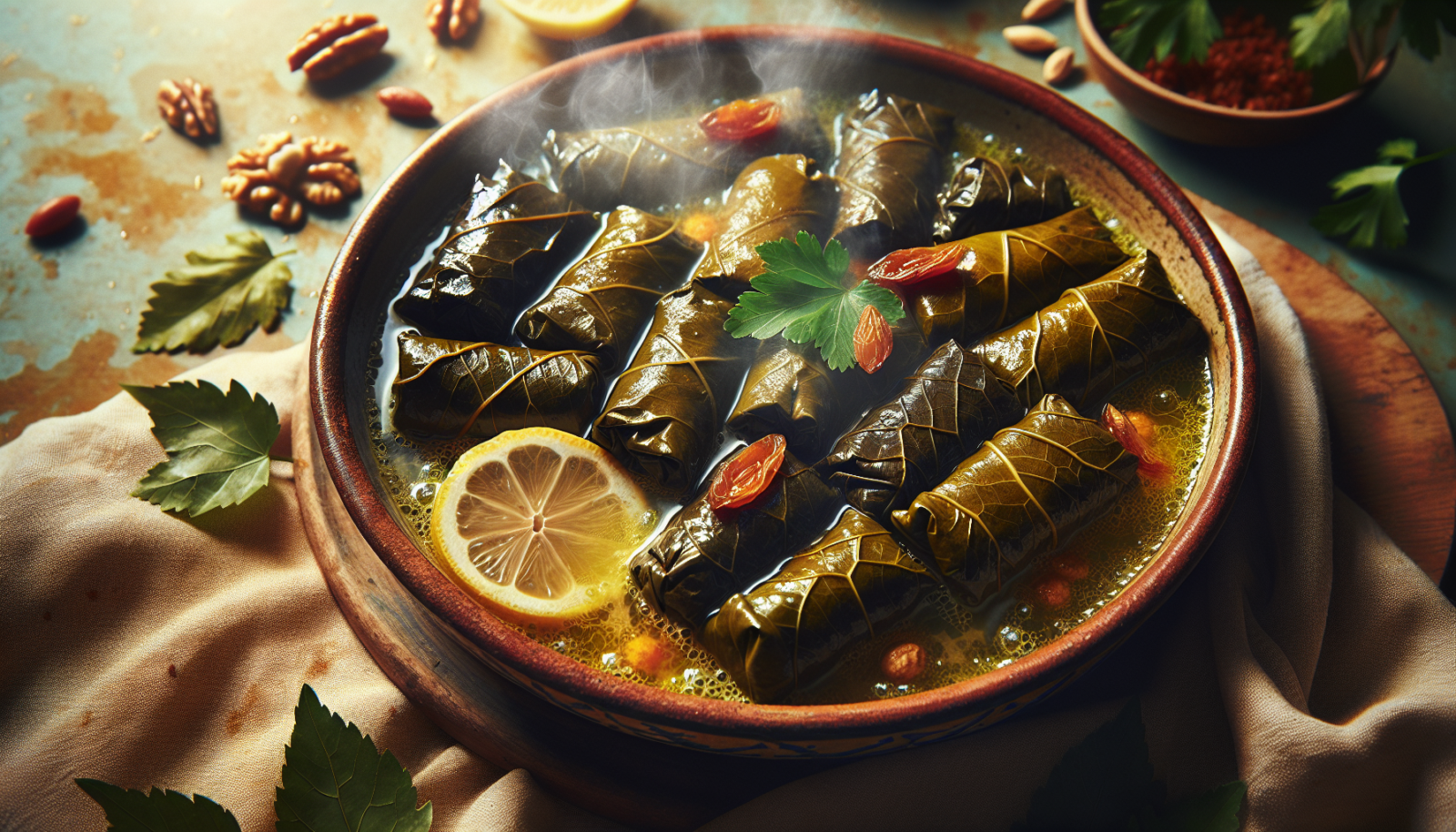



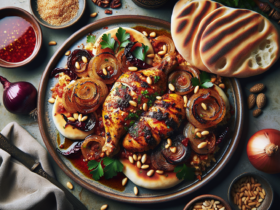
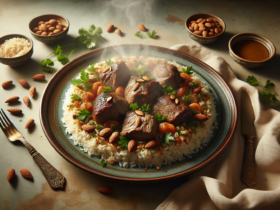
Leave a Review